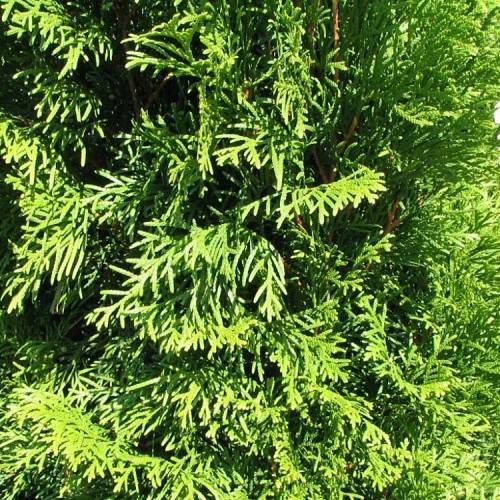
American arborvitae
Thuja occidentalis 'Degroot's Spire'
Cycle:
Perennial
Watering:
Frequent
Hardiness Zone:
2 - 7
Flowers:
Flowers In Spring
Sun:
Full sun, Part sun/part shade
Soil:
Sandy Loamy Clay Rocky
Cones:
Yes
Leaf:
Yes
Growth Rate:
Moderate
Maintenance:
Low
Drought Tolerant:
Yes
Care Level:
Moderate
watering
American arborvitae is a slow-growing species, so its water needs are minimal. On average, it should be watered once a week or as needed during the spring and summer months. In the fall season, the plant should be watered more sparingly— about every 2 weeks to a month. During the winter, waterings should be even less frequent— only when the top inch or 2 of soil has dried out. Also, make sure that the soil never becomes soggy from overwatering.
sunlight
American arborvitae (Thuja occidentalis 'Degroot's Spire') should receive full sun to partial shade. If planted in full sun, the plant should receive direct sunlight for 6 to 8 hours per day. If planted in partial shade, the plant should receive bright but indirect sunlight for 4 to 6 hours per day. This species of arborvitae also does best with protection from harsh winds and hot afternoon sun.
pruning
American arborvitae should be pruned twice a year; once in early spring (late March to mid-April) and once in late summer (August). Spring pruning entails removing any dead, broken, or diseased branches to keep the tree healthy and strong. Late summer pruning should focus on shaping the bush by removing any thin, weak, or spindly branches. This will allow light and air to penetrate and stimulate growth of more compact branches. If more drastic pruning is necessary, it is best to do it over a 3-year period to minimize the stress on the tree. With proper pruning and enough light, American arborvitae can reach heights to 25-30 feet tall.
